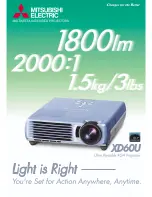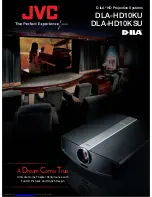
EN-2
About the symbols
To ensure safe and proper use of the product, this manual uses a number of symbols to prevent injury to you and others as well as damage to property.
The symbols and their meanings are described below. Be sure to understand them thoroughly before reading this manual.
WARNING
Failing to heed this symbol and handling the product erroneously could result in accidents leading to death or major
injury.
CAUTION
Failing to heed this symbol and handling the product erroneously could result in personal injury or damage to sur-
rounding property.
Examples of symbols
This symbol indicates you should be careful of electric shocks.
This symbol indicates you should not touch with wet hands.
This symbol indicates you should be careful of high tempera-
tures.
This symbol indicates something that must not be disas-
sembled.
This symbol indicates something that must be prohibited.
This symbol indicates things you must do.
This symbol indicates something that must not be got wet.
This symbol indicates that the power cord should be un-
plugged from the power outlet.
Safety Cautions
WARNING
Projected light
Projected light and the pictogram/label indicated on the cabinet
PROHIBITED
• Do not look into the projector’s lens.
Strong light that could damage your vision is projected when the projector is operating. Laser energy exposure near aperture
may cause burns. Be especially careful when children are around.
• Do not look at the projected light using optical devices (magnifying glasses, reflectors, etc.). Doing so could result in vision
impairment.
• Check that there is no one looking at the lens within the projection range before turning on the projector.
• Do not allow children to operate the projector alone. When a child is operating the projector an adult should always be
present and watch the child carefully.
• The below pictogram, that is indicated near the lens on the cabinet, describes looking into the projector is prohibited.
Continue to next page
Summary of Contents for PV800UL-W
Page 14: ...EN 12...
Page 26: ...FR 12...
Page 38: ...ES 12...
Page 50: ...PT 12...
Page 52: ...TW 2...
Page 53: ...TW 3 1 2 3 1 3 2 IEC EN 62471 5 2 3 3 TW 8 TW 7 100 240 V AC 50 60 Hz...
Page 54: ...TW 4...
Page 55: ...TW 5 2 AC IN...
Page 59: ...TW 9 EMI 2006 66 EC...
Page 60: ...TW 10 1 2 3 4 5 200 1 600 AC IN 20 c c a a a b d c c a a a a a b c d a b c 20 8 d 30 12...
Page 62: ...TW 12...





































